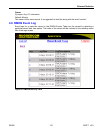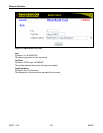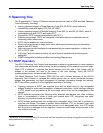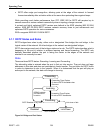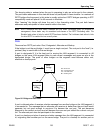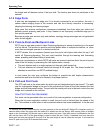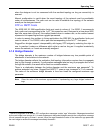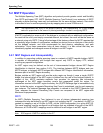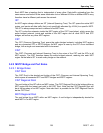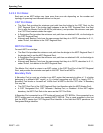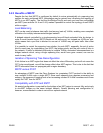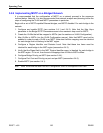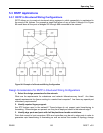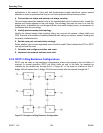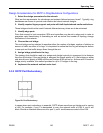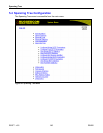
Spanning Tree
RS400 139 ROS™ v3.5
Each MSTI has a topology that is independent of every other. Data traffic originating from the
same source and bound to the same destination but on different VLANs on different MSTIs may
therefore travel a different path across the network.
IST
An MST region always defines an IST (Internal Spanning Tree). The IST spans the entire MST
region, and carries all data traffic that is not specifically allocated (by VLAN) to a specific MSTI.
The IST is always computed and is defined to be MSTI zero.
The IST is also the extension inside the MST region of the CIST (see below), which spans the
entire bridged network, inside and outside of the MST region and all other RSTP and STP
bridges, as well as any other MST regions.
CST
The CST (Common Spanning Tree) spans the entire bridged network, including MST regions
and any connected STP or RSTP bridges. An MST region is seen by the CST as an individual
bridge, with a single cost associated with its traversal.
CIST
The CIST (Common and Internal Spanning Tree) is the union of the CST and the ISTs in all
MST regions. The CIST therefore spans the entire bridged network, reaching into each MST
region via the latter’s IST to reach every bridge on the network.
5.2.2 MSTP Bridge and Port Roles
5.2.2.1 Bridge Roles:
CIST Root
The CIST Root is the elected root bridge of the CIST (Common and Internal Spanning Tree),
which spans all connected STP and RSTP bridges and MSTP regions.
CIST Regional Root
The root bridge of the IST within an MST region. The CIST Regional Root is the bridge within an
MST region with the lowest cost path to the CIST Root. Note that the CIST Regional Root will
be at the boundary of an MST region. Note also that it is possible for the CIST Regional Root to
be the CIST Root.
MSTI Regional Root
The root bridge for an MSTI within an MST region. A root bridge is independently elected for
each MSTI in an MST region.



